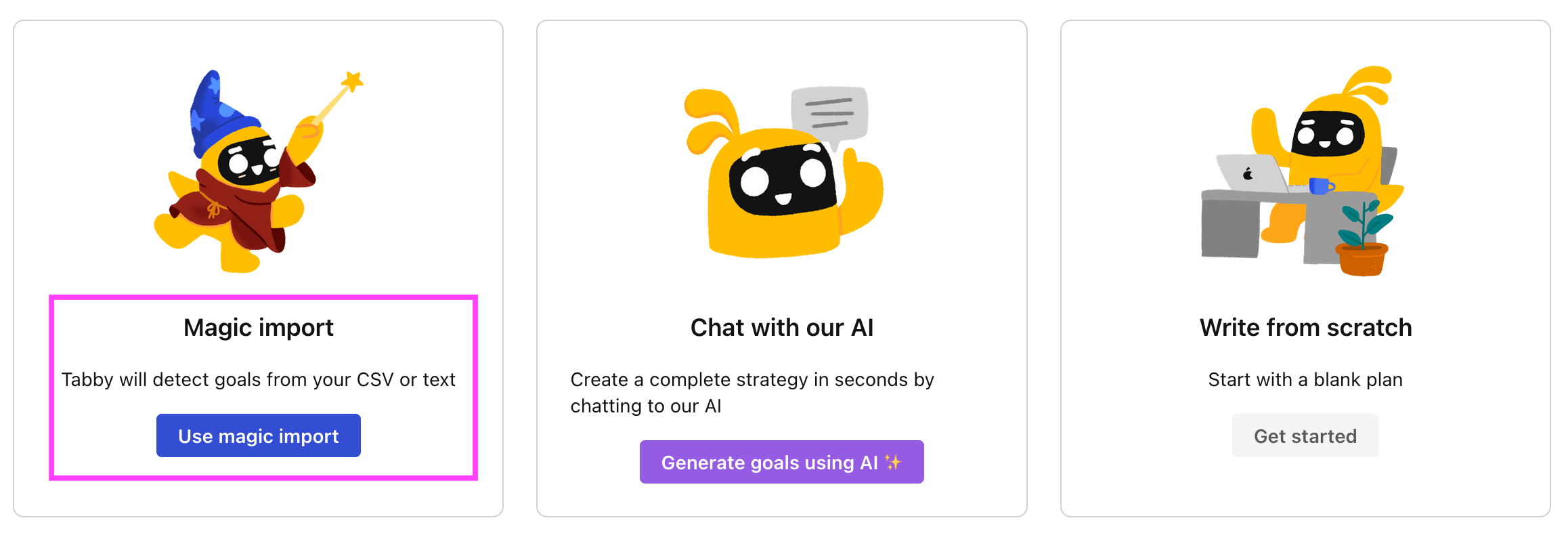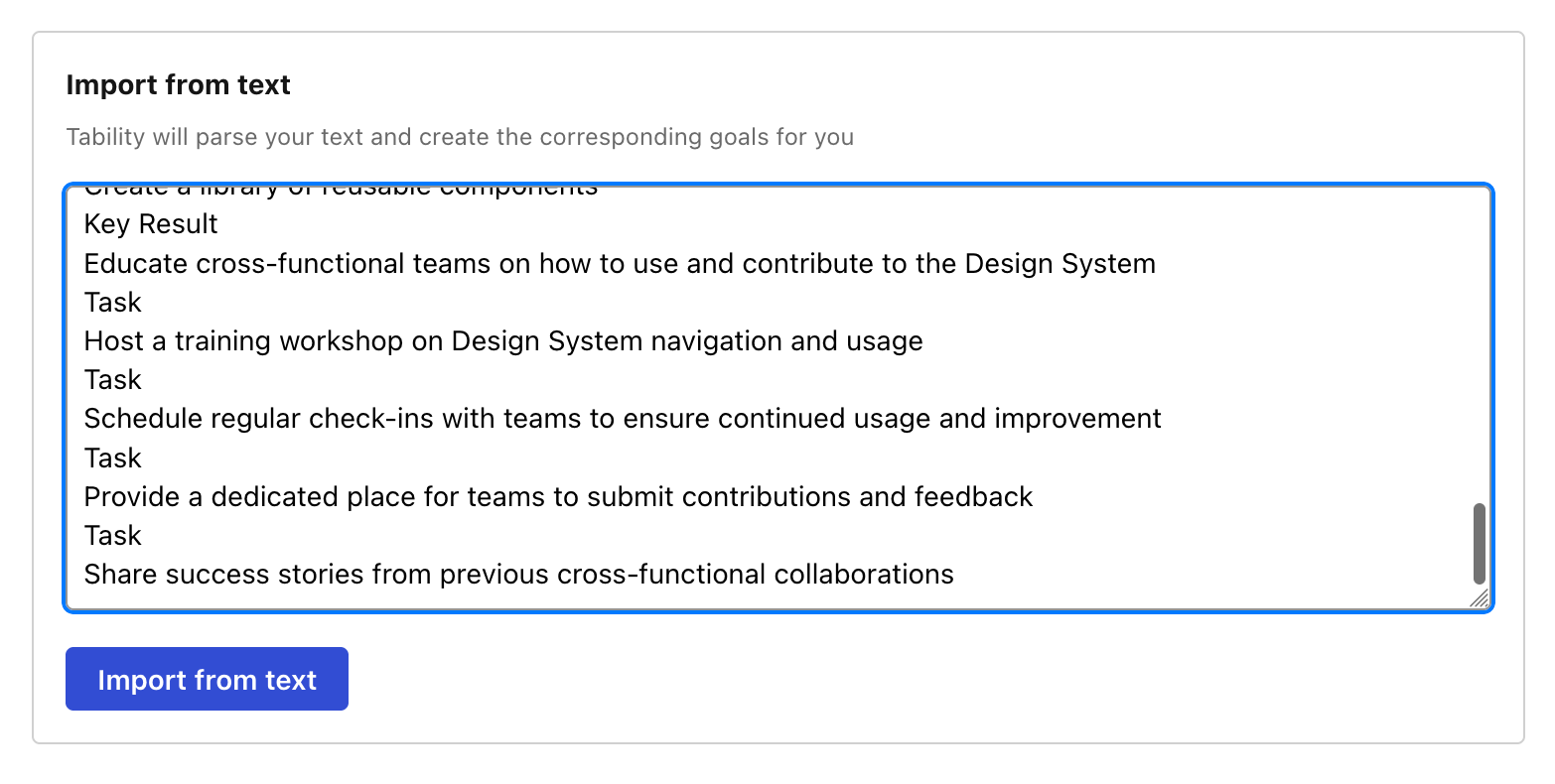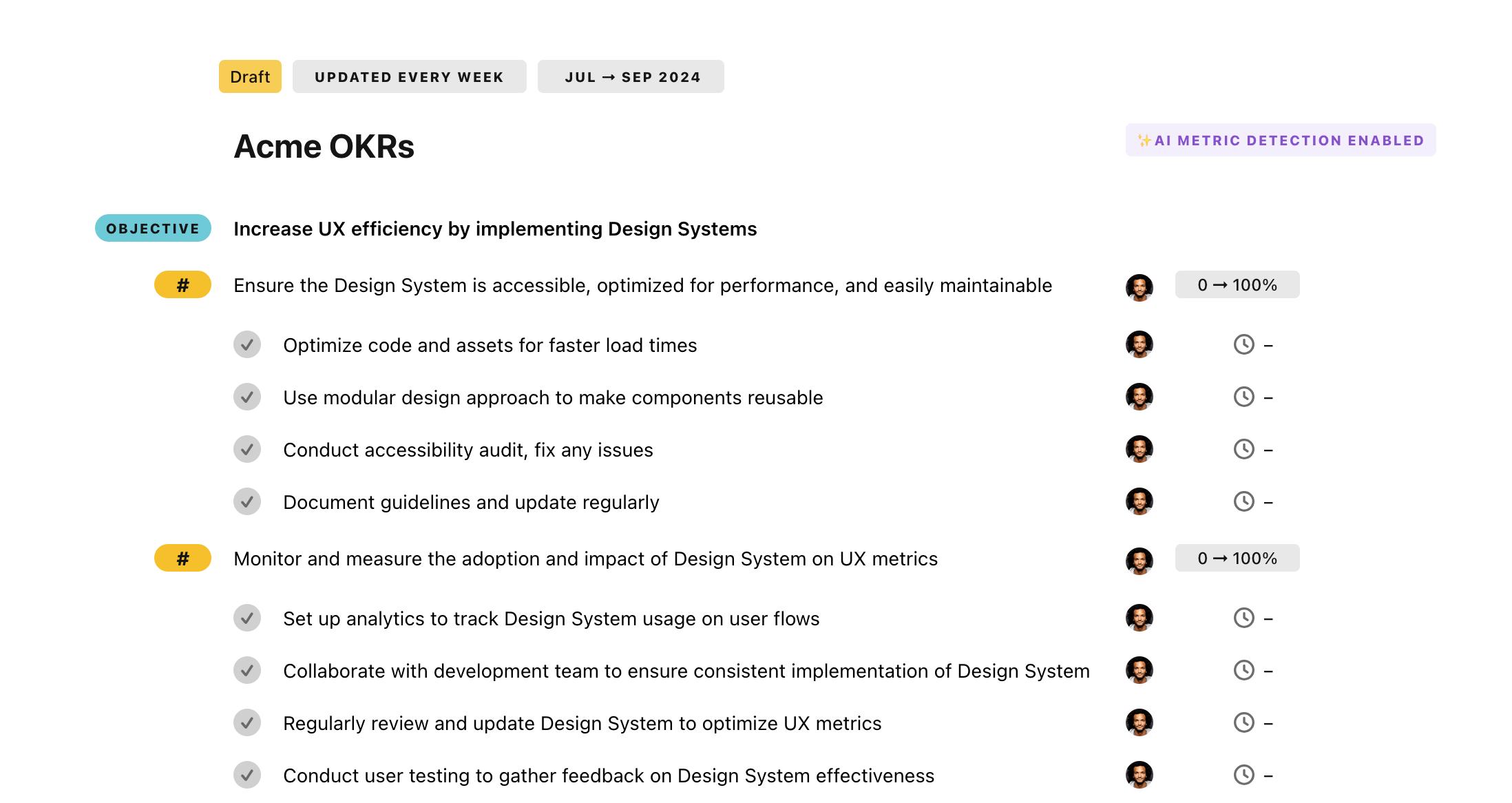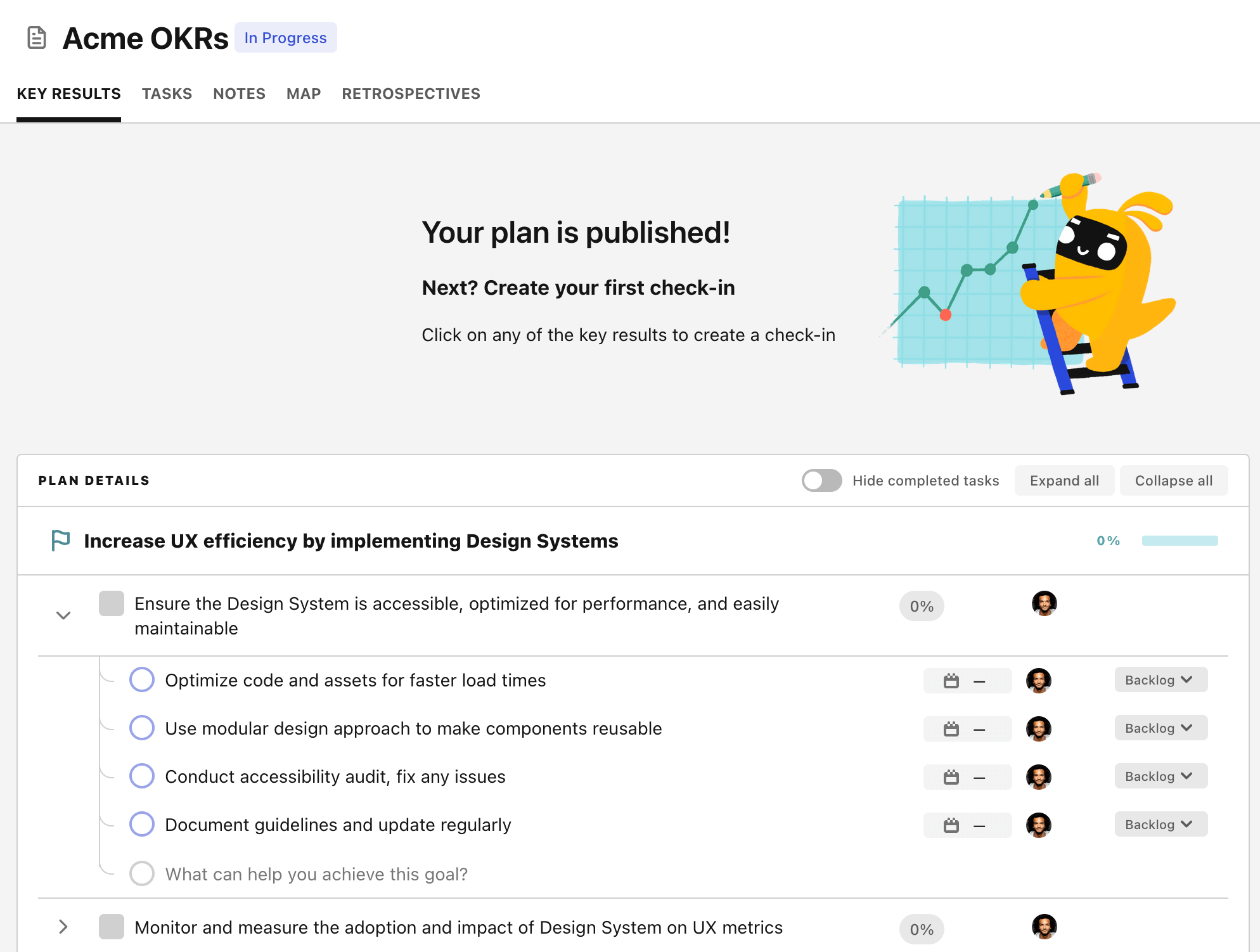OKR template to ensure full ISSO compliance through regular audits and security training
Your OKR template
The first objective involves initiatives to schedule ISSO compliance training for new hires, prepare relevant ISSO compliance materials, and carry out the training within the first week. This ensures early awareness and adherence to ISSO standards amongst new employees.
The second objective aims at increasing auditing frequency. This would involve establishing a weekly audit schedule for consistent implementation, monitoring, and tracking weekly audit outcomes consistently. It would also require training the audit team on the new weekly audit frequency. Committing to these initiatives should improve compliance standards.
The last objective addresses reducing security breaches by implementing two-factor authentication for all system logins, conducting regular cybersecurity training for staff, and updating and strengthening all passwords regularly. These initiatives will enhance overall information security and reduce breaches significantly.
ObjectiveEnsure full ISSO compliance through regular audits and security training
KRTrain all new employees about ISSO compliance within their first week of employment
Schedule ISSO compliance training for new hires
Prepare relevant ISSO compliance materials
Conduct compliance training within their first week
KRIncrease the frequency of conducting audits to 100% every week from next quarter
Establish weekly audit schedule for consistent implementation
Monitor and track weekly audit outcomes constantly
Train audit team on the new weekly audit frequency
KRReduce security breaches by 90% through enhanced information security measures this quarter
Implement two-factor authentication for all system logins
Conduct regular cybersecurity training for staff
Update and strengthen all passwords regularly
How to edit and track OKRs with Tability
You'll probably want to edit the examples in this post, and Tability is the perfect tool for it.
Tability is an AI-powered platform that helps teams set better goals, monitor execution, and get help to achieve their objectives faster.
With Tability you can:
- Use AI to draft a complete set of OKRs in seconds
- Connect your OKRs and team goals to your project
- Automate reporting with integrations and built-in dashboard
Instead of having to copy the content of the OKR examples in a doc or spreadsheet, you can use Tability’s magic importer to start using any of the examples in this page.
The import process can be done in seconds, allowing you to edit OKRs directly in a platform that knows how to manage and track goals.
Step 1. Sign up for a free Tability account
Go tohttps://tability.app/signup and create your account (it's free!)
Step 2. Create a plan
Follow the steps after your onboarding to create your first plan, you should get to a page that looks like the picture below.

Step 3. Use the magic importer
Click on Use magic import to open up the Magic Import modal.
Now, go back to the OKR examples, and click on Copy on the example that you’d like to use.

Paste the content in the text import section. Don’t worry about the formatting, Tability’s AI will be able to parse it!

Now, just click on Import from text and let the magic happen.

Once your example is in the plan editor, you will be able to:
- Edit the objectives, key results, and tasks
- Click on the target 0 → 100% to set better target
- Use the tips and the AI to refine your goals
Step 4. Publish your plan
Once you’re done editing, you can publish your plan to switch to the goal-tracking mode.

From there you will have access to all the features that will help you and your team save hours with OKR reporting.
- 10+ built-in dashboards to visualise progress on your goals
- Weekly reminders, data connectors, and smart notifications
- 9 views to map OKRs to strategic projects
- Strategy map to align teams at scale